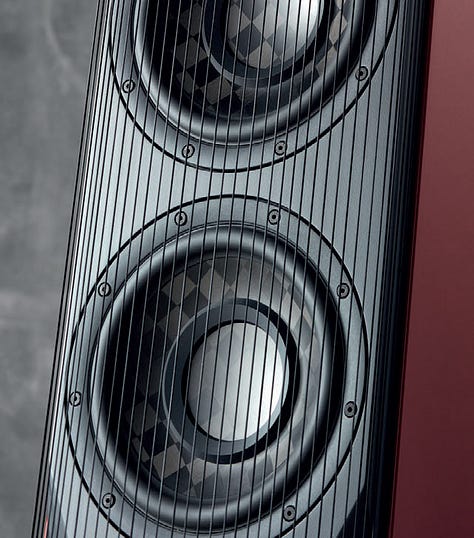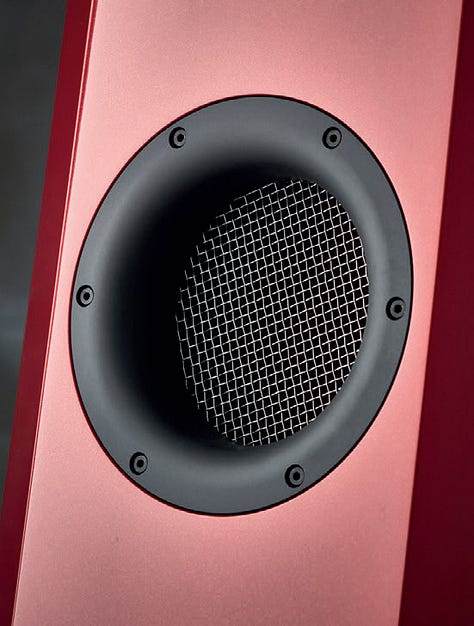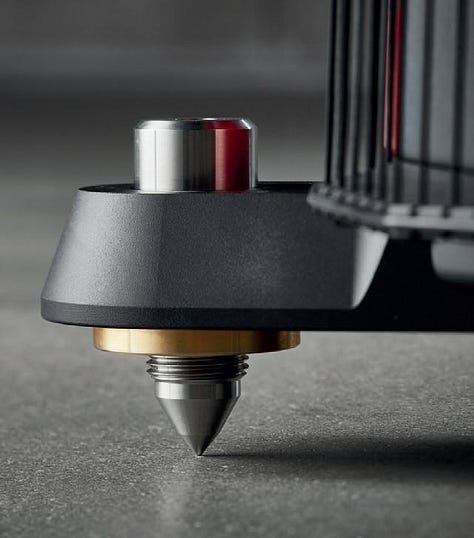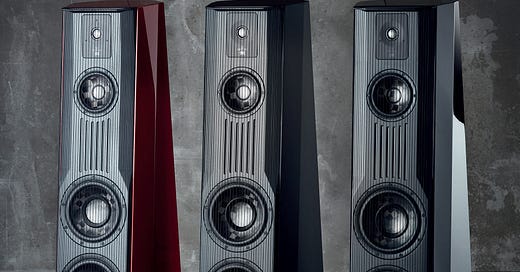Loudspeakers are everywhere. You can find good loudspeakers from a range of companies in every hi-fi shop on the planet. But outstanding loudspeakers are thin on the ground. What’s more, outstanding loudspeakers from companies best known for other parts of the great audio pantheon... well, they are as rare as hen’s teeth. Gryphon Audio’s EOS 5 floorstander is one of the rare exceptions.
Gryphon has made loudspeakers for years. But typically, we are talking about a range of loudspeakers that go from ‘huge’ to ‘vast’ and are priced accordingly. And yes, I am saying that in the understanding that the three-way, four-driver EOS 5 stands 1.3m tall, weighs over 50kg, and costs more than £40k per pair. Still, compared to the mighty Kodo, which costs around £400k, stands over 2.3m tall, and the whole package weighs in at 1,354kg in its eight wooden crates, the EOS 5 is a more real-world prospect.
Go almost everywhere
The EOS 5 builds on the strengths of Gryphon’s ‘go everywhere’ EOS 2. That two-way floorstander – launched at Munich High End 2023 – has a front and rear port, one of which is sealed depending on the room acoustics and size. The ‘go-almost-everywhere’ EOS 5 is more physically imposing and less accommodating of smaller rooms and demands a precise set-up, but the scaled-up similarities are impossible to ignore. Both use the company’s ‘Stealth’ enclosure. This relies on a front baffle that has been sculpted to act as a diffusor for in-room standing waves. It is also engineered to ensure good dispersion and uniform energy output. In some loudspeaker systems, that means less of a ‘sweet spot’, but on the Gryphon EOS, it is said to mean improved soundstaging. I suspect it probably does both.
Stealth is a deceptively complex piece of design, and not simply a set of grooves set into the front baffle for aesthetic reasons. And yes, that’s where I went when first looking at the EOS 5; those curves and grooves look like they are design cues from Gryphon’s electronics. However, the closer you look, the more you notice this isn’t the case at all. And from a sonic standing, that rigid baffle could easily act as a reflective surface, and the grooves help break that up.
Although there is no provision to direct the port to the front baffle, the EOS 5 shares the EOS 2’s advanced (and proprietary) ‘Line porting’, which is a special way of ‘tunnel-damping’ the rear sound of the bass driver towards the ports. This ensures a direct path for the low frequencies to reach the port while providing an efficient damping of frequencies above the 60 - 80Hz region, without creating artefacts in the upper frequencies.
A good enclosure is only as successful as the drivers and crossover within. The reverse is also true, but poor drivers in a great box are never going to amount to much more than a mediocre performance. The EOS 5’s drivers are all unique to the design, made specifically for the task. These are once again based on the designs developed for the EOS 2. EOS 5 features a 29mm beryllium dome tweeter; this is smaller than the 34mm design from the EOS 2 because the EOS 5 is a three-way design and therefore has a higher mid-treble crossover point.
The tweeter is joined at the midrange to a 165mm driver, featuring the company’s TPCD (Thin-Ply Carbon-fibre Diaphragm), which is also used for the diaphragms in the twin 240mm bass units. These woven carbon-fibre cones are made by some of the best people in the business; the teams that fabricate the carbon-fibre used in Formula One.



We’re used to seeing bass and mid-bass units either with a phase plug or a simple dust cap to keep the pole piece and voice coil free from contamination. The best phase plugs improve the upper registers of a driver on-axis, while the best dust caps improve the structural integrity of the cone.
However, by introducing what Gryphon calls an ‘impulse optimiser ring’ placed directly above the voice coil, the Gryphon gets very close to achieving both at once; it strengthens the bond between cone and voice coil, improves impulse response (as the name suggests) and makes the driver act closer to being purely pistonic, improving its performance outside its normal crossover point.
Keep reading with a 7-day free trial
Subscribe to The Absolute Sound to keep reading this post and get 7 days of free access to the full post archives.





